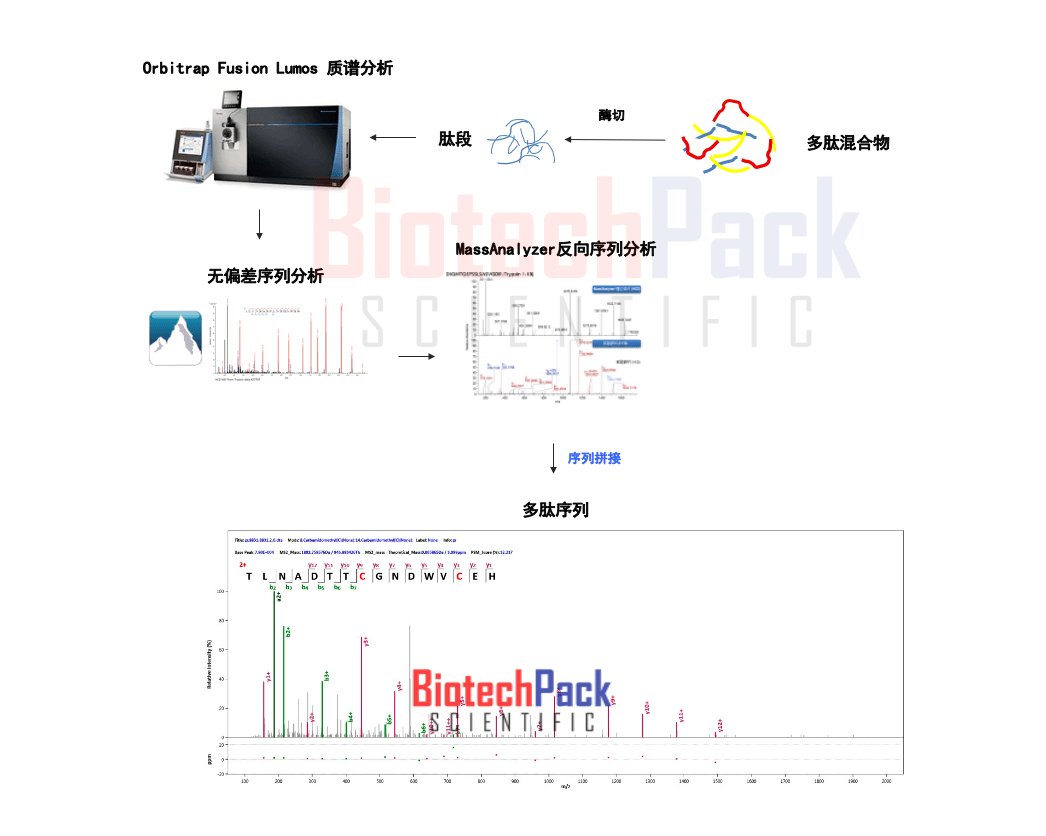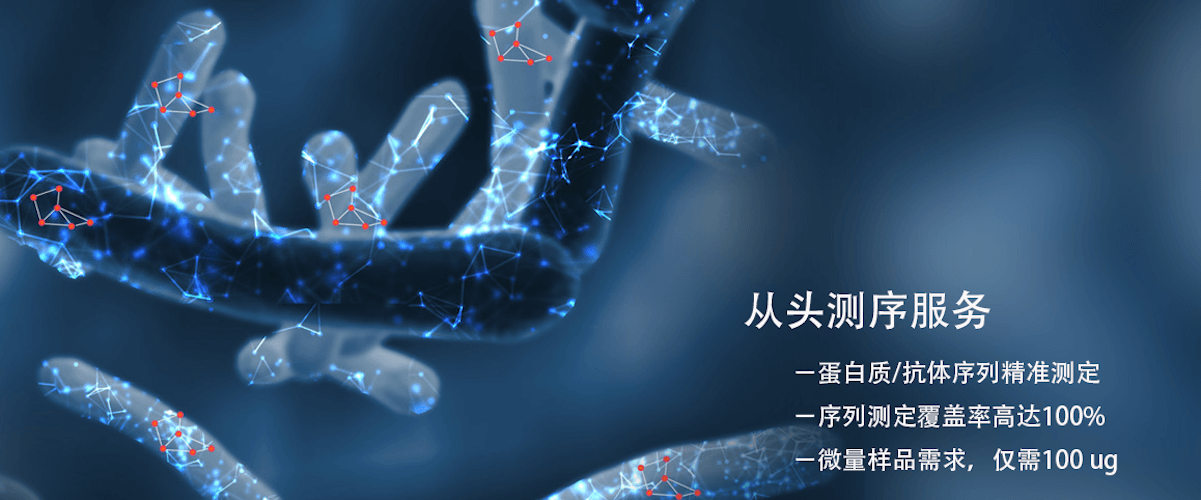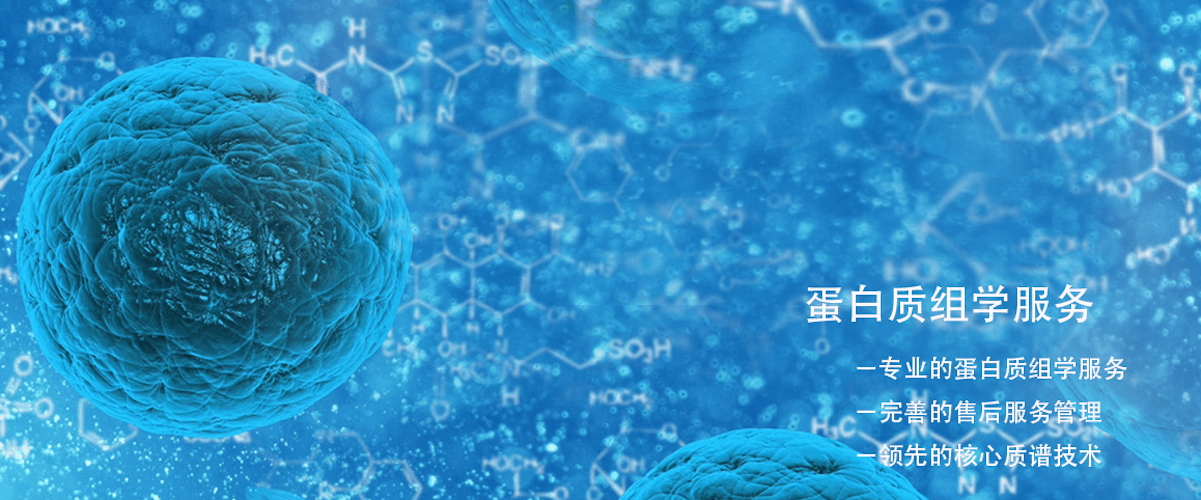Peptide Sequencing
Thousands of naturally occurring peptides have been identified and recognized for their important roles in human physiological processes, including functioning as hormones, neurotransmitters, growth factors, ion channel ligands, or anti-infectives, among others. Peptide drugs are considered to have high selectivity and efficacy, combined with relative safety and good tolerability. Therefore, there is growing interest in peptide drugs in drug research and development (R&D), with hundreds of peptide drugs currently undergoing clinical trial evaluations.
Peptides and proteins are composed of amino acids, the basic building blocks of the human body, and are linked together by peptide bonds. The distinction between them lies in the size of the amino acid chains; peptides consist of smaller chains than proteins. Peptides contain two or more amino acids and can be subdivided into oligopeptides and polypeptides. Oligopeptides have a small number of amino acids (approximately 2-20), while polypeptides contain more. However, this definition and the way scientists use each term are not always strict. Proteins are formed by one or more peptides linked together. Essentially, proteins are very large peptides. Generally, we differentiate polypeptides and proteins by the number of amino acids: polypeptides consist of 2 to 50 amino acids, while proteins consist of 50 or more amino acids. Research into peptide drugs holds immense potential, such as discovering new peptides, designing more targeted peptide libraries and sequence optimization, developing new formulations, and researching multifunctional peptides and complexes. To achieve these, identifying peptides and analyzing peptide sequences is the first step to advancing research.

Peptide sequencing schematic
Mass spectrometry-based peptide sequence analysis
There are two common methods for peptide sequence determination: database search and de novo sequencing. For shorter peptides, such as those less than 30 amino acids, Biotage Biotech directly performs secondary fragmentation to derive peptide sequences from raw mass spectrometry data through either database searching or de novo sequencing to obtain their theoretical sequences. For longer peptides (>30 amino acids), Biotage Biotech employs three different proteases for enzymatic cleavage and identification of the target peptide segments. By obtaining fragmented peptide segments and assembling them, the complete peptide sequence can be determined 100% through de novo sequencing. This method can also be used to analyze sequences in mixed peptide samples.
Biotage Biotech uses Thermo's latest Obitrap Fusion Lumos mass spectrometer in conjunction with Nano-LC nanoliter chromatography technology to provide mass spectrometry-based peptide sequence analysis services and peptide de novo sequencing services. Biotage uses Thermo's latest Obitrap Fusion Lumos mass spectrometer for peptide sample sequence analysis. The Obitrap Fusion Lumos mass spectrometer is currently the highest resolution and sensitivity mass spectrometer, ensuring sensitivity in identifying low-abundance peptide fragments. During the peptide fragmentation process, it employs a combination of HCD and ETD modes to ensure the integrity of peptide fragmentations. After obtaining raw mass spectrometry data, for peptides with less than 30 amino acids, we use database or de novo sequencing methods to analyze the raw data. For peptides with more than 30 amino acids, de novo sequencing is generally used to deduce peptide sequences.
Sample preparation recommendations:
• Prepare 100 ug of sample if possible: prepare at least 10-25 ug for samples <30 amino acids, and try to prepare at least >50 ug of purified sample for samples >30 amino acids;
• Use the purest reagents possible, rather than molecular biology grade reagents;
• Use the smallest centrifuge tubes possible;
• Avoid contaminants or concentrate proteins in solutions.
**Consult Biotage Biotech's technical staff for targeted sample preparation.
Biotage Biotech can perform peptide sequence analysis on samples in both liquid and solid states. Solid samples can be transported using ice packs; liquid samples can be vacuum-dried or freeze-dried and transported using ice packs, or shipped with dry ice. Feel free to contact us for inquiries.
Related services
Protein N/C-terminal sequencing
How to order?





